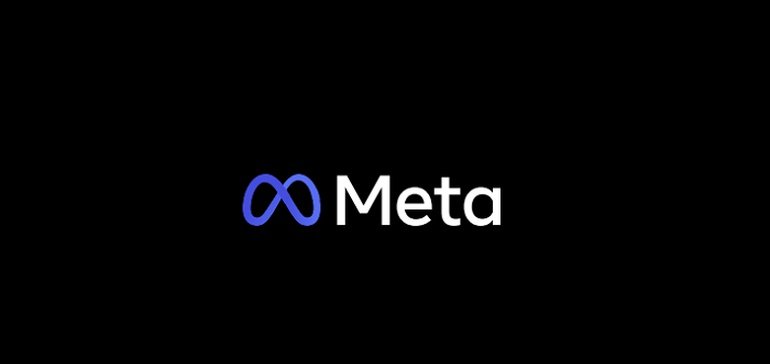SOCIAL
Meta Plans to Establish an NFT Marketplace, Expanding Beyond Profile Pictures

If it’s happening on social media, Meta wants to own it, so it comes as no surprise that the company is currently working on ways to tap into the popularity of NFTs. But Meta actually envisions a bigger future for digital goods, beyond cartoonish profile pictures, which will eventually expand the core functionality of the NFT transaction process to facilitate the transfer of various kinds of digital goods within its planned metaverse.
Sorry, I should say the metaverse, as Meta is keen to underline that it won’t own it, as such (antitrust lawyers take note).
As reported by The Financial Times:
“Teams at Facebook and Instagram are readying a feature that will allow users to display their NFTs on their social media profiles, as well as working on a prototype to help users create – or mint – the collectible tokens, according to several people familiar with the matter. Two of the people said that Meta has also discussed launching a marketplace for users to buy and sell NFTs.”
The first element noted here is already in progress – last June, we reported on Instagram’s initial test of a new ‘Collectibles’ option which would facilitate the display of NFTs in the app (as discovered by app researcher Alessandro Paluzzi).
That test also pointed to facilitating the sale of NFTs in the app, with a process for bidding and buying NFT images.
The latest element in this process includes attaching a digital wallet to your account, much like you would on OpenSea or other NFT transaction platforms, so the experiment seems fairly well advanced in this respect.
That likely points to Instagram making a move on this soon, and where Instagram goes, Facebook tends to follow, so that part is no real revelation versus what we already know.
But what is interesting is how this process could be built into Meta’s broader metaverse plans, and the sale of digital goods, beyond just profile pictures (PFPs). Because really, that’s just the starting point, and there’ll likely be far more value in buying other digital products and services in the next stage of connection.
Which is where much of the confusion about the current state of NFTs lies. Yes, there is major potential in the purchase and ownership of digital goods, as we’ve seen in various game worlds, where users can buy add-on features like skins, weapons, abilities, etc. For many young consumers, this is already second nature – but while much of the value in these items is aesthetic, providing an opportunity to ‘flex’ your latest purchase in each app, there is also a practical value and usage, which is different to PFP projects, the main focal point for current Web3 early adopters and those keen to be at the forefront of the next digital shift.
Overall, PFPs don’t provide much value, and likely won’t remain a key focus for digital ownership. Many of these projects hilariously claim to be ‘metaverse ready’, which is not possible, because not even the metaverse is metaverse ready at this stage, with the schemas and parameters yet to be established that would enable cross-platform transfers and usage of digital goods in the broader space.
Some PFP projects are working to build out broader community benefits and usage options for owners, which will extend the value beyond their images alone. But really, the true value of NFTs will come in other digital goods and items, which looks to be the true focus of Meta’s NFT push.
Indeed, back in October, Meta’s CEO Mark Zuckerberg noted that NFTs could eventually be used to support a new market for digital goods in the metaverse, not just profile images, while Meta’s Head of Metaverse Products Vishal Shah has also noted that the underlying NFT transaction process will eventually make it easier to sell digital products in its apps.
In this sense, PFPs are only the beginning of what could be possible with digital items more broadly, and with Meta also continuing to work on its own cryptocurrency , it does seem likely that, eventually, it will be able to facilitate broader digital transactions through the NFT process.
But those NFTs won’t be limited to PFP images, which is the main criticism of the current NFT market. Why would you pay to own an image that you can view for free? Why would you pay to only own the receipt of a digital image, and not the full copyright and commercial re-use rights (for most projects)?
Legally, there are still some issues to be worked out in this respect, but if you view NFTs as a gateway, of sorts, to broader transactions of all kinds of digital goods, from avatar clothing to skins, to in-game weapons, items, spells, etc. When you consider that NFTs don’t have to just be images of smiling monkeys and cats, you can start to see the broader potential of NFTs as real value items, especially as we increasingly spend more and more time in these digital environments.
Essentially, early NFT adopters are indeed early, and many are putting far too much stock in PFPs, and getting ripped off as a result. But the broader view is that these digital items will have more use and expanded application in the next stage.
Which is why Meta is looking to move in, and build more tools to capitalize on this initial interest. So while you may view those NFT bros as being a little overzealous, and overexcited about buying JPGs, consider that there will be more to the scope of NFTs in future.
That doesn’t mean that you should care about what image you use for your profile picture, or that you should be looking to buy up a ‘VeeFriends’ NFT drawing (please don’t). But those images are just the start of a new online marketplace.
SOCIAL
Snapchat Explores New Messaging Retention Feature: A Game-Changer or Risky Move?

In a recent announcement, Snapchat revealed a groundbreaking update that challenges its traditional design ethos. The platform is experimenting with an option that allows users to defy the 24-hour auto-delete rule, a feature synonymous with Snapchat’s ephemeral messaging model.
The proposed change aims to introduce a “Never delete” option in messaging retention settings, aligning Snapchat more closely with conventional messaging apps. While this move may blur Snapchat’s distinctive selling point, Snap appears convinced of its necessity.
According to Snap, the decision stems from user feedback and a commitment to innovation based on user needs. The company aims to provide greater flexibility and control over conversations, catering to the preferences of its community.
Currently undergoing trials in select markets, the new feature empowers users to adjust retention settings on a conversation-by-conversation basis. Flexibility remains paramount, with participants able to modify settings within chats and receive in-chat notifications to ensure transparency.
Snapchat underscores that the default auto-delete feature will persist, reinforcing its design philosophy centered on ephemerality. However, with the app gaining traction as a primary messaging platform, the option offers users a means to preserve longer chat histories.
The update marks a pivotal moment for Snapchat, renowned for its disappearing message premise, especially popular among younger demographics. Retaining this focus has been pivotal to Snapchat’s identity, but the shift suggests a broader strategy aimed at diversifying its user base.
This strategy may appeal particularly to older demographics, potentially extending Snapchat’s relevance as users age. By emulating features of conventional messaging platforms, Snapchat seeks to enhance its appeal and broaden its reach.
Yet, the introduction of message retention poses questions about Snapchat’s uniqueness. While addressing user demands, the risk of diluting Snapchat’s distinctiveness looms large.
As Snapchat ventures into uncharted territory, the outcome of this experiment remains uncertain. Will message retention propel Snapchat to new heights, or will it compromise the platform’s uniqueness?
Only time will tell.
SOCIAL
Catering to specific audience boosts your business, says accountant turned coach

While it is tempting to try to appeal to a broad audience, the founder of alcohol-free coaching service Just the Tonic, Sandra Parker, believes the best thing you can do for your business is focus on your niche. Here’s how she did just that.
When running a business, reaching out to as many clients as possible can be tempting. But it also risks making your marketing “too generic,” warns Sandra Parker, the founder of Just The Tonic Coaching.
“From the very start of my business, I knew exactly who I could help and who I couldn’t,” Parker told My Biggest Lessons.
Parker struggled with alcohol dependence as a young professional. Today, her business targets high-achieving individuals who face challenges similar to those she had early in her career.
“I understand their frustrations, I understand their fears, and I understand their coping mechanisms and the stories they’re telling themselves,” Parker said. “Because of that, I’m able to market very effectively, to speak in a language that they understand, and am able to reach them.”Â
“I believe that it’s really important that you know exactly who your customer or your client is, and you target them, and you resist the temptation to make your marketing too generic to try and reach everyone,” she explained.
“If you speak specifically to your target clients, you will reach them, and I believe that’s the way that you’re going to be more successful.
Watch the video for more of Sandra Parker’s biggest lessons.
SOCIAL
Instagram Tests Live-Stream Games to Enhance Engagement

Instagram’s testing out some new options to help spice up your live-streams in the app, with some live broadcasters now able to select a game that they can play with viewers in-stream.
As you can see in these example screens, posted by Ahmed Ghanem, some creators now have the option to play either “This or That”, a question and answer prompt that you can share with your viewers, or “Trivia”, to generate more engagement within your IG live-streams.
That could be a simple way to spark more conversation and interaction, which could then lead into further engagement opportunities from your live audience.
Meta’s been exploring more ways to make live-streaming a bigger consideration for IG creators, with a view to live-streams potentially catching on with more users.
That includes the gradual expansion of its “Stars” live-stream donation program, giving more creators in more regions a means to accept donations from live-stream viewers, while back in December, Instagram also added some new options to make it easier to go live using third-party tools via desktop PCs.
Live streaming has been a major shift in China, where shopping live-streams, in particular, have led to massive opportunities for streaming platforms. They haven’t caught on in the same way in Western regions, but as TikTok and YouTube look to push live-stream adoption, there is still a chance that they will become a much bigger element in future.
Which is why IG is also trying to stay in touch, and add more ways for its creators to engage via streams. Live-stream games is another element within this, which could make this a better community-building, and potentially sales-driving option.
We’ve asked Instagram for more information on this test, and we’ll update this post if/when we hear back.
-

 PPC5 days ago
PPC5 days ago19 Best SEO Tools in 2024 (For Every Use Case)
-
SEARCHENGINES7 days ago
Daily Search Forum Recap: April 17, 2024
-

 SEO7 days ago
SEO7 days agoAn In-Depth Guide And Best Practices For Mobile SEO
-
SEARCHENGINES6 days ago
Daily Search Forum Recap: April 18, 2024
-

 MARKETING6 days ago
MARKETING6 days agoEcommerce evolution: Blurring the lines between B2B and B2C
-
SEARCHENGINES5 days ago
Daily Search Forum Recap: April 19, 2024
-

 SEO6 days ago
SEO6 days ago2024 WordPress Vulnerability Report Shows Errors Sites Keep Making
-

 WORDPRESS5 days ago
WORDPRESS5 days agoHow to Make $5000 of Passive Income Every Month in WordPress















You must be logged in to post a comment Login